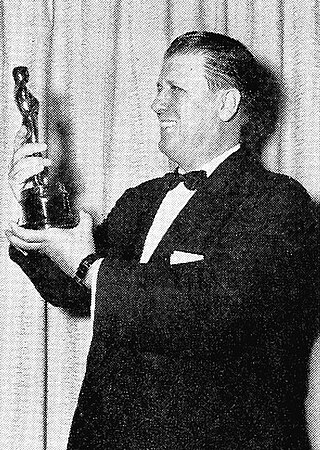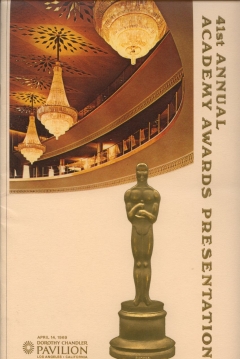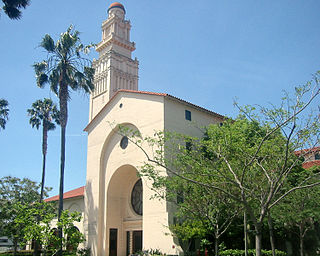Related Research Articles

The Academy of Motion Picture Arts and Sciences (AMPAS), often pronounced AM-pass; also known as simply the Academy or the Motion Picture Academy) is a professional honorary organization in Beverly Hills, California, U.S., with the stated goal of advancing the arts and sciences of motion pictures. The Academy's corporate management and general policies are overseen by a board of governors, which includes representatives from each of the craft branches.
The Academy Award for Best Documentary Feature Film is an award for documentary films. In 1941, the first awards for feature-length documentaries were bestowed as Special Awards to Kukan and Target for Tonight. They have since been bestowed competitively each year, with the exception of 1946. Copies of every winning film are held by the Academy Film Archive.

The Living Desert is a 1953 American nature documentary film that shows the everyday lives of the animals of the desert of the Southwestern United States. The film was written by James Algar, Winston Hibler, Jack Moffitt (uncredited) and Ted Sears. It was directed by Algar, with Hibler as the narrator and was filmed in Tucson, Arizona. The film won the 1953 Oscar for Best Documentary.

George Cooper Stevens was an American film director, producer, screenwriter and cinematographer. He received two Academy Awards and the Irving G. Thalberg Memorial Award in 1953.
This is a list of films by year that have received an Academy Award together with the other nominations for best documentary short film. Following the Academy's practice, the year listed for each film is the year of release: the awards are announced and presented early in the following year. Copies of every winning film are held by the Academy Film Archive. Fifteen films are shortlisted before nominations are announced.

The 41st Academy Awards were presented on April 14, 1969, to honor the films of 1968. They were the first Oscars to be staged at the Dorothy Chandler Pavilion, Los Angeles, and the first with no host since the 20th Academy Awards.

Ari Folman is an Israeli film director, screenwriter, animator, and film-score composer. He directed the Oscar-nominated animated documentary film Waltz with Bashir (2008) and the live-action/animated film The Congress. He is a member of the Academy of Motion Picture Arts and Sciences.
Toward Independence is a 1948 American short documentary film about the rehabilitation of veterans with spinal cord injuries. Army Surgeon General Raymond W. Bliss received the award. In 1949, it won an Oscar for Documentary Short Subject at 21st Academy Awards. The Academy Film Archive preserved Toward Independence in 2005.
War Department Report is a 1943 American documentary film directed by Carl Marzani. It was nominated for an Academy Award for Best Documentary Feature.

Design for Death is a 1947 American documentary film that won the Academy Award for Best Documentary Feature. It was based on a shorter U.S. Army training film, Our Job in Japan, that had been produced in 1945–1946 for the soldiers occupying Japan after World War II. Both films dealt with Japanese culture and the origins of the war.
The Human Dutch is a 1963 Dutch documentary film directed by Bert Haanstra, about the daily lives of people in the Netherlands. It was a big success in the Netherlands with almost 1.7 million admissions, the third most successful Dutch film at the time. It was nominated for an Academy Award for Best Documentary Feature. It was also selected as the Dutch entry for the Best Foreign Language Film at the 37th Academy Awards, but was not accepted as a nominee.
Rembrandt: A Self-Portrait is a 1954 American short documentary film about the artist Rembrandt produced by Morrie Roizman, a former editor for The March of Time. This film shows a series of Rembrandt's artwork, including painting and drawings spanning his entire life and being shown as related of events throughout his life are narrated.
A City Decides is a 1956 American short documentary film directed by Charles Guggenheim about the racial integration of St. Louis Public Schools. It was nominated for an Academy Award for Best Documentary Short.
Children Without is a 1964 American short documentary film directed by Charles Guggenheim, about a young girl and her brother growing up in the housing projects of Detroit. It was nominated for an Academy Award for Best Documentary Short, losing to another film by Guggenheim, Nine from Little Rock. Children Without was preserved by the Academy Film Archive in 2016.
Poster Girl is a 2010 American short documentary film about an American soldier's experience with posttraumatic stress disorder after returning from the Iraq War. The film showed at the 37th Telluride Film Festival on September 3, 2010. It was named as a nominee for the Academy Award for Best Documentary at the 83rd Academy Awards on January 25, 2011, but lost to Strangers No More.

Mitchell W. Block was an American filmmaker, primarily a producer of documentary films.

The Margaret Herrick Library is the main repository of print, graphic and research materials of the Academy of Motion Picture Arts and Sciences (AMPAS). The library contains a digital repository of historical materials, including those relating to the Academy Awards ceremonies. It is located in Beverly Hills, California. The library is governed by the Academy's Board of Governors.
Operation Blue Jay was the code name for the construction of Pituffik Space Base in Greenland. It started as a secret project, but was made public in September 1952.

Carson "Kit" Davidson was an American filmmaker, writer, and editor. His filmmaking career spanned four decades, during which he made more than a dozen short films, two of which were nominated for Academy Awards.
References
- ↑ "NY Times: Library of Congress". Movies & TV Dept. The New York Times . Archived from the original on October 15, 2012. Retrieved November 23, 2008.
- ↑ "The 18th Academy Awards (1946) Nominees and Winners". oscars.org. Retrieved May 29, 2019.
- ↑ "Preserved Projects". Academy Film Archive.
- ↑ "Academy War Film Collection". Academy Film Archive.